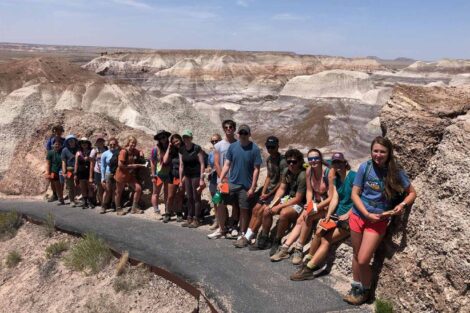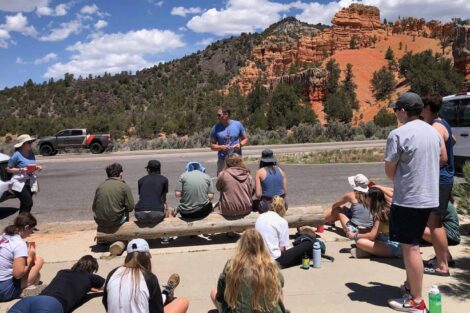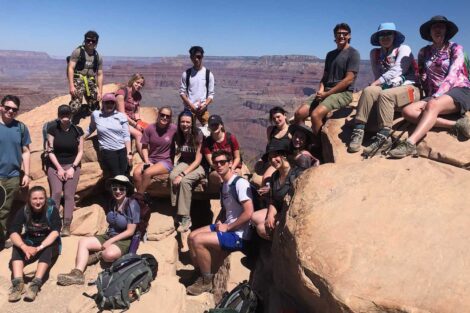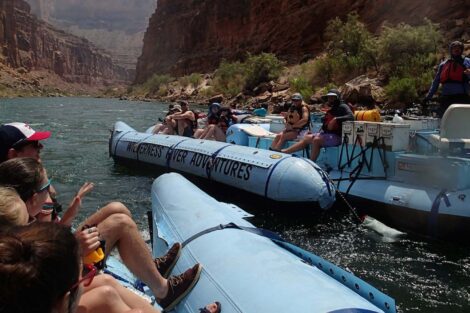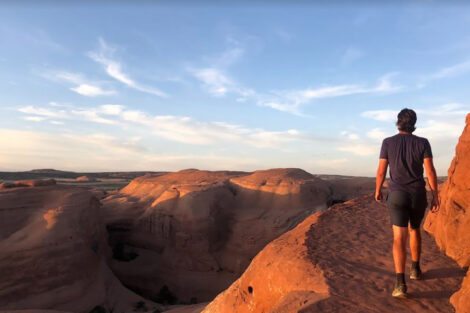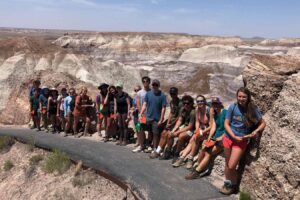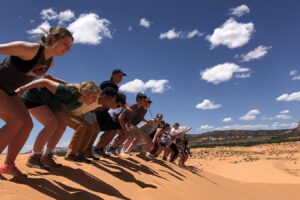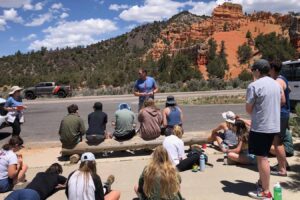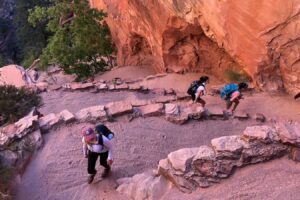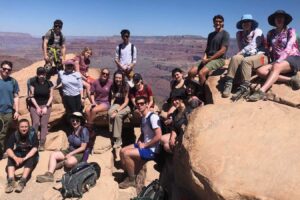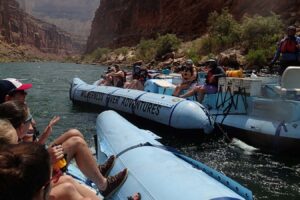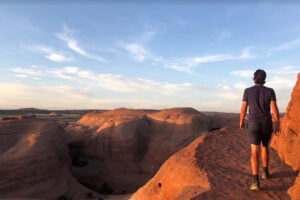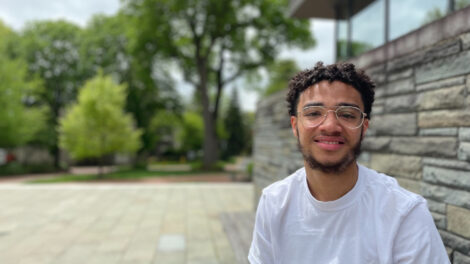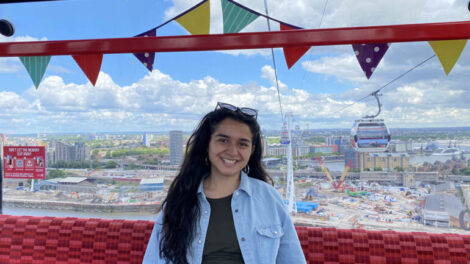'In this course, you get to experience the fun in taking field notes, adventuring with professors, and hands-on detective work while being constantly immersed in the environment'
By Shannon Sigafoos
What do rocks say about the history of the world?
Eighteen students and their guides—Larry Malinconico, associate professor of geology and geophysics, and David Sunderlin, associate professor of geology and department head—found out earlier this summer when they spent nearly three weeks learning, traveling, camping, and rafting through national parks in Arizona and Utah.
The field course, which began with two days of intensive study at Lafayette covering basic geologic concepts and earth materials, then saw the group put boots on the ground amidst some of the oldest geologic wonders in the country. While examining processes of sedimentation, igneous intrusion, and erosion, the group wound its way through the Grand Canyon, Zion, Bryce, Grand Staircase of the Escalante, Capitol Reef, Arches, Canyonlands, Mesa Verde, Shiprock, Meteor Crater, and Petrified Forest.
“There’s geology everywhere—it’s not just the parks. We rent vans and stop alongside the road to teach, using the van as our whiteboard,” says Sunderlin. “There are some students who are really moved every year. When they see these parks, their jaws just drop. It’s fun for me and for the students to see it.”
The course aims to have the rocks, by their characteristics, tell students about the nature of their environment and how they were deposited. Reading the rocks, Sunderlin says, is possible because of their layers—and each layer teaches about the evolution of life, sea level change, and climatic variation.
“Each page, each layer, is interpretable. What’s cool about going out to the desert in the Southwest is that there are a lot of layers to go through in the Grand Canyon. Then, we can jump over to Zion and jump up to Bryce Canyon, and the pages are written in sequence,” he says.
“We look at it two ways. If you’re standing in that environment, from the Grand Canyon up through Bryce, you’re talking about 1.7 billion years of Earth history. How would things have changed when you’re there? You would have gone from a marine environment to a beach environment to a desert environment. That’s all written in the rocks,” says Malinconico, who has taught the course seven times. “The second thing is taking one slice of time. In one location, you’re in a shallow marine environment depositing limestones and organisms. But if you move 200 miles to the east, you would have been, perhaps, in a beach environment. We want them to understand changes through time, and also spatially.”
Throughout the course, students keep a field notebook, work on a mapping project, and test their knowledge by taking a series of four exams. They’re also asked to reflect on readings, participate in discussions, and make observations about their surroundings.
“I never expected this course to be so interdisciplinary. I expected a lot of geology going into the trip, but I ended up coming out with a lot more. In addition to the wide variety of topics in geology, we learned about biology, paleontology, archaeology, anthropology, and engineering. I loved this aspect of the course because, like many other students, I have such a broad range of interests. I was thrilled to get exposure to all of the things I love in a three-week course,” reflects Maddy Brennan ’25. “Any geologist will tell you that the more rocks you see, the better geologist you are. Observing, touching, and even licking (yes, licking!) rocks in the field allowed me to retain information better than I ever have before. Prof. Sunderlin would always tell us that we were ‘in the puzzle’ when we were out in the field. The pieces were all around us—the rocks, the fossils, the valleys, the plateaus, the mountains—and it was our job to put them together in a four-dimensional manner.”
“It was not until the national parks course that I decided this was my true passion in life. I decided while hiking through Mesa Verde that I was going to be a geology major. The combination of learning while in the field, and observing current landscapes and hypothesizing what created them, is something that I loved about this course,” shares Evelyn Locke-Tittle ’24. “In this course, you get to experience the fun in taking field notes, adventuring with professors, and hands-on detective work while being constantly immersed in the environment. This course helped me find and follow my heart, change majors, and come out with a greater understanding of the opportunities that are within geology.”
“It’s one thing to see the beauty of the way it is, but if you can understand what’s actually laid out in front of you as far as history in the world and the various events that made the shape of the landscape the way it is, that’s the main value added,” reiterates Sunderlin. “It’s the reading of the rocks and what they mean about the history of the planet that really take it to another level.”


